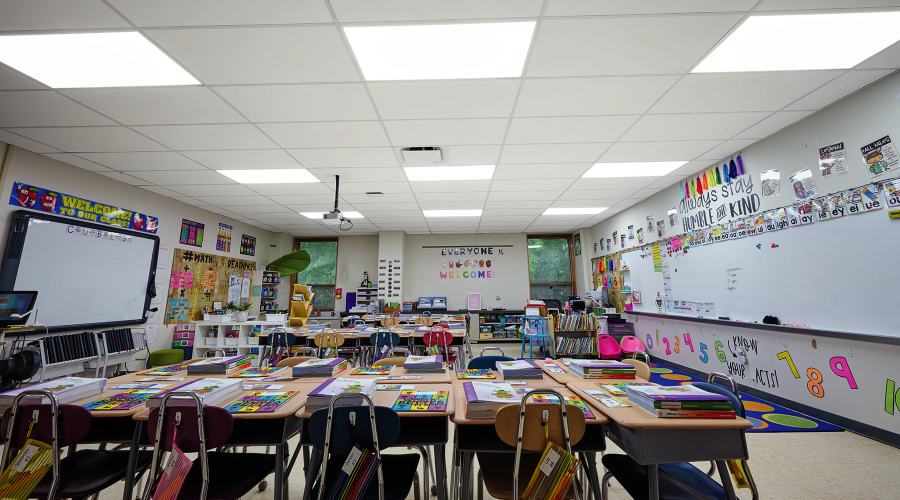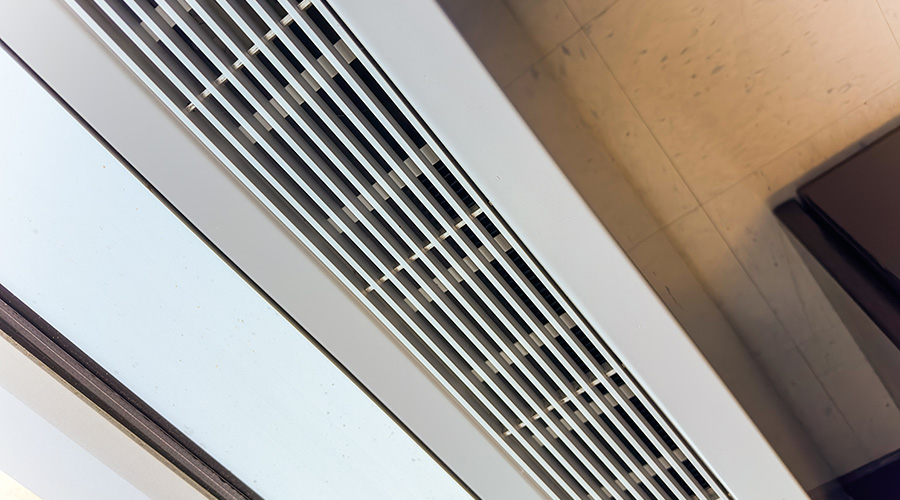Growing IAQ Risk: Lawsuits
Understanding the causes for legal action can help facility executives keep their organizations out of trouble
Consider the following: A building owner converts a warehouse into an office building and begins leasing space. During construction, designers had neglected to consider new air handlers for the building’s new use. Almost immediately, the owner hears complaints that occupants are constantly sneezing and the air always smells funny.
Busy with other matters, the owner puts those complaints on the back burner. After a few months, the owner is served with a lawsuit over personal injuries allegedly resulting from poor indoor air quality. For good measure, a request for damages for “business interruption” is also tacked on.
Or how about this: A developer builds a trendy new “live, work and play” mixed-use development in the heart of downtown. The complex includes retail space, restaurants, gyms, bars and condos. Within weeks, odors from a seafood restaurant begin seeping into an office space located directly above. The disgusted residents slap together a class-action lawsuit and the developer finds himself in court.
It seems that there is no definition for a “typical” air quality case, says W. Elliott Horner, a principal consultant with Air Quality Sciences and an expert in dealing with moisture and mold-related issues in commercial buildings.
“Lawsuits over indoor air quality are common and increasing,” Horner says. “The traditional construction defect lawsuit is still the most common, but indoor air quality lawsuits are becoming more mainstream.”
And just who is suing whom? That’s part of the changing characteristics of these suits.
“All parties are bringing suits: occupants filing against owners, contractors suing suppliers, owners suing insurance companies and contractors — just about anyone owning or occupying a building,” he says.

Personal injury is a familiar basis for the suits where the tenant of a space sues the building owner. Many of these cases stem from the suitability of the building for its current use.
“The air quality is not what they expect in that building,” Horner says.
Product liability is another angle creeping into air quality lawsuits, said Tony Worthan, president and chief operating officer of Air Quality Sciences.
“There is a rise in suits over issues such as VOCs (volatile organic compounds), product failures and adverse noxious odors,” he says.
Horner says lawsuits can emerge from seemingly the most innocuous types of buildings. In addition to the mixed-use example, other examples include cigar shops and beauty salons located next to almost any other kind of retail store space in a mall setting. Manufacturing facilities with any sort of emissions also are open to these kinds of complaints, especially if they’re adjacent to office spaces.
Public buildings are particularly vulnerable to complaints about poor indoor air quality. But these buildings don’t necessarily have “tenants” in the traditional sense of the word, says George DuBose, vice president of Liberty Building Diagnostics Group.
“In the case of assisted living centers, schools, and courthouses, their relationship is not the same as an office building. There is greater potential for occupant outrage over issues such as temperature and odors,” DuBose says. “There is the potential to lose trust.”
Just how often do plaintiffs win these types of lawsuits?
“They win enough to stay in the headlines,” says Horner. “They are increasing in visibility.”
Many times, the lawsuit isn't about poor indoor air quality itself, but about what caused poor indoor air quality.
“What we’re seeing in relation to poor indoor air quality are issues related to design deficiencies,” says Horner. For example, high moisture and humidity in a building are linked to a specific construction deficiency.
Not all lawsuits are the result of smoldering, unresolved complaints. Some complaints stem from accidents and disasters. When these kinds of problems emerge, they tend to escalate rapidly.
“In our experience, it depends upon the population that occupied the building. When there is a higher level of trust in the building owner, the outrage of occupants escalates quickly,” DuBose says. “There is a loss of trust in the management company or facility executive and the building itself, and now the technical fix becomes more expensive. You can’t deny the problem. You really have to respond quickly to complaints.”
Horner agrees. “If an accident does happen, have contacts in place. Know ahead of time how to respond appropriately. This is crisis planning. Think about it in advance. It’s like fire safety. You want to know before the need arises.
“It’s a lot easier and cheaper to work this out before there’s an emergency. And indoor air quality issues become an emergency very quickly: from mass hysteria all the way to people really being exposed to agents that can give them permanent debilitating illness,” Horner continues. “As soon as the TV truck shows up, it becomes an emergency. It’s the same as having a natural gas pipe burst. You have to have a communications plan in place.”
But instead of waiting for a complaint to come or an accident to happen, Worthan recommends facility executives become more proactive to prevent indoor air quality issues.
“There is more and more emphasis on prevention,” he says.
Periodic inspections ensure that the building is free of indoor contaminants. Inspections and other measures of prevention reduce the risk of disrupting the building.
Few regulations provide facility executives with real direction. Tobacco smoke is perhaps the most highly-regulated indoor air pollutant. Asbestos is another, but beyond those two contaminants, few state and local guidelines exist, Worthan says.
In California, Proposition 65 limits exposure to formaldehyde. Formaldehyde exposure is common through new office furniture and through renovation projects that aren’t properly sealed off from the rest of the building.
Most furniture manufacturers are aware of California’s laws. “I don’t know if there’s been any enforcement associated with products, but the possibility is there,” Worthan says.
Regulations and lawsuits aside, facility executives should focus on indoor air quality because reputation is critical in leasing commercial space.
“We know from working with mortgage bankers that a building can acquire a reputation, and a reputation can be difficult to shake,” says Worthan. “A poor reputation can diminish the value of a building. Perception is reality, and investors and tenants get gun shy. People make choices, and they don’t want to get a building with a bad reputation.”
LITIGATION UPDATE
Settling Out of Court
A major culprit of poor indoor air quality, and a lightning rod for litigation itself, is mold. However, in some states where combating mold has been historically difficult because of high humidity and moisture, there has been A shift in the way mold litigation is handled.
Moisture-soaked Florida perhaps can be used as a national barometer for air quality-related lawsuits. Huge jury awards are fading because the standards for damages are changing.
“In Florida, I always ask audiences if anyone is aware of a personal injury award because of mold problem,” says George DuBose, vice president of Liberty Building Diagnostics Group. “Very few people say it gets to that point. More often they’re getting settled before there’s a huge award.”
If the process server does show up, don’t panic. Facility executives should have pre-established procedures in place to meet the claims head-on. W. Elliott Horner, a principal consultant with Air Quality Sciences, suggests putting air quality experts in place, along with an attorney experienced in this particular area. Other recommended experts include architects and real estate appraisers.
“Whatever the cause of the poor indoor air quality, defendants are more frequently settling out of court, more so than other general types of lawsuits,” he says. “The driving factors that cause defendants to settle are the typical reasons: litigation costs, the near complete absence of regulation, and, as with any other general category, the fact that you have experts on both sides with dueling opinions.”
— Lynn Proctor Windle
|
Lynn Proctor Windle, a contributing editor for Building Operating Management, is a freelance writer who has written extensively about real estate.
Related Topics:












